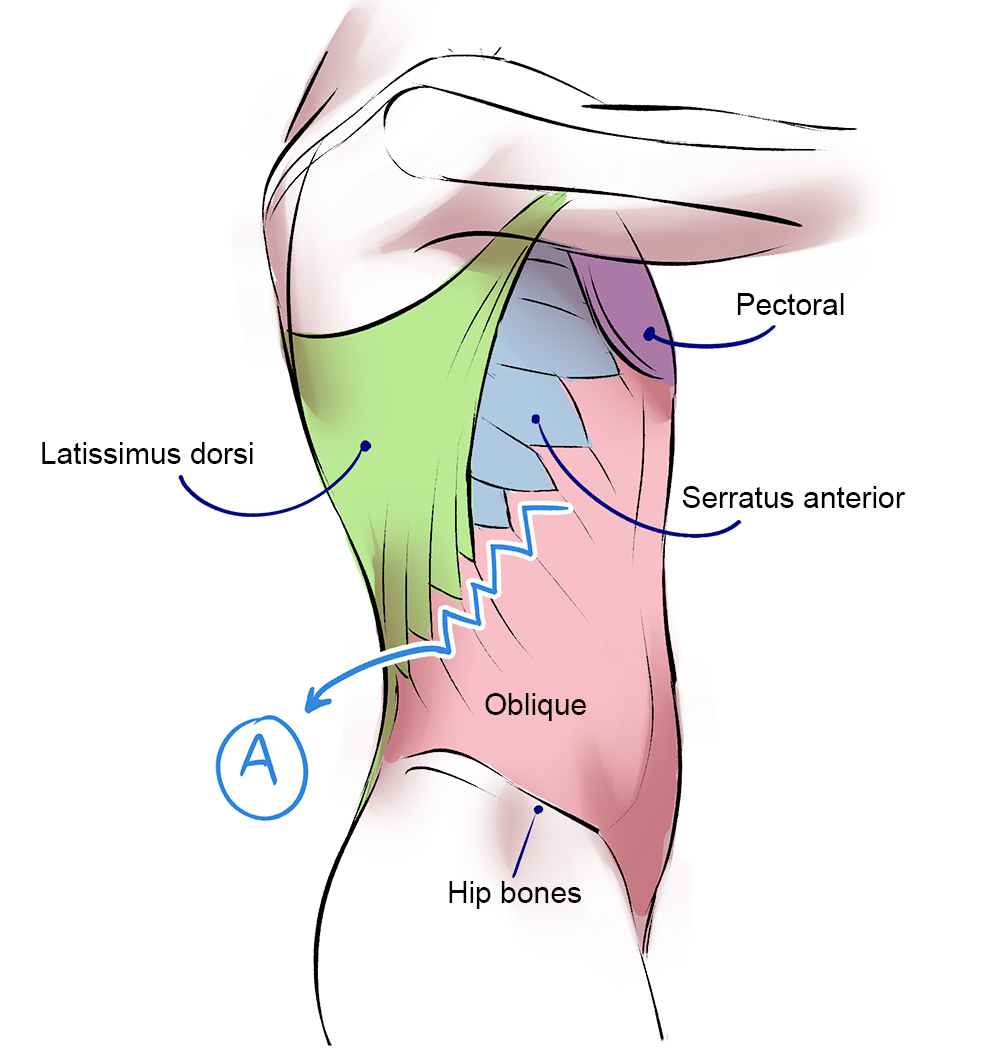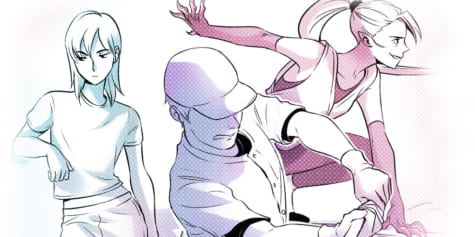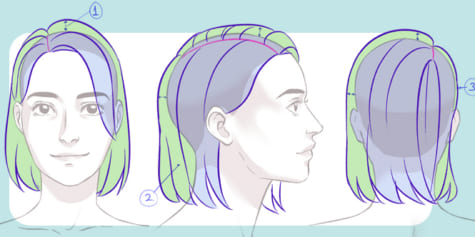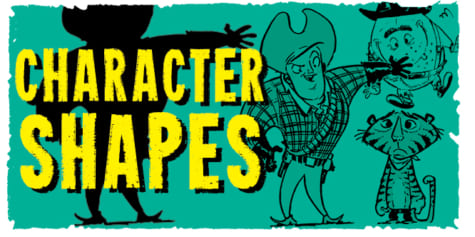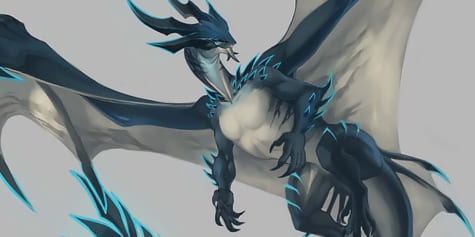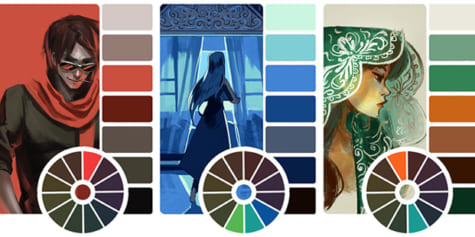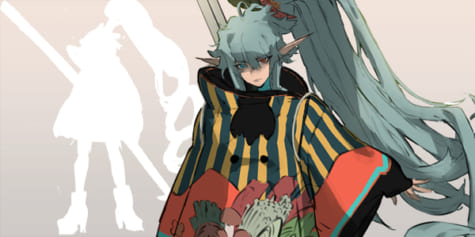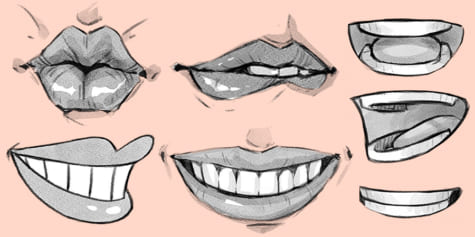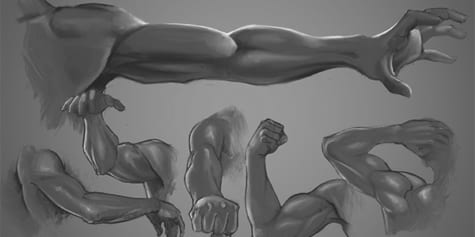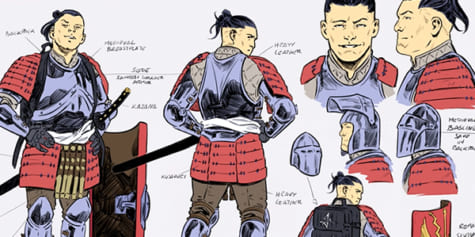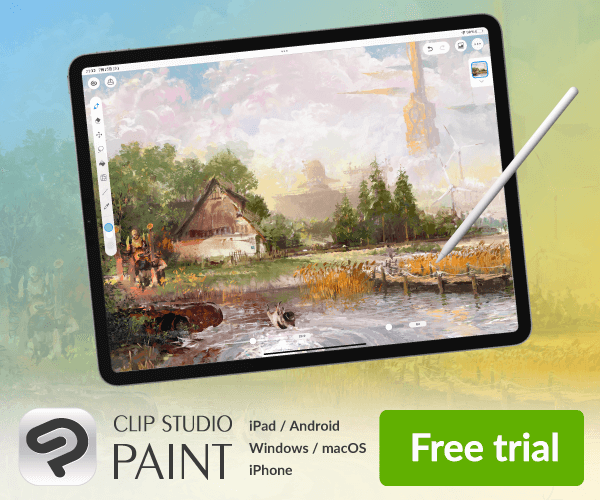Muscles of the Human Body
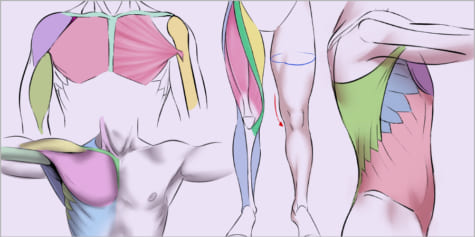
A helpful and detailed muscle manual by artist Eridey. The major muscles of the torso, arms and legs are explained in this easy-to-understand guide complete with color-coded diagrams showing how muscles change depending on the angle and movement.
Muscles have the amazing characteristics of being able to bend, stretch and relax. Each of them perform a specific function depending on where they are in the body. But in general, they are in charge of transforming the energy sent from the nervous system into movement.
I have taken the opportunity to study them all – where they are placed, their functions, their shapes. However, with so many muscles in the human body, I have decided to only focus on the most important ones for when we draw.
The learning process may be a bit confusing at times, so I recommend using your own separate sketchbook to take notes in your own time. There is no better way to learn!
The Muscles of the Torso
The trapezius is located on the back. This is the muscle that extends across the upper part of the trunk, and it helps to move the scapula.
The latissimus dorsi (dorsal) muscle is located in the lower part of the trunk. It is wide and flat, covering a large part of the spine all the way to the sacrum.
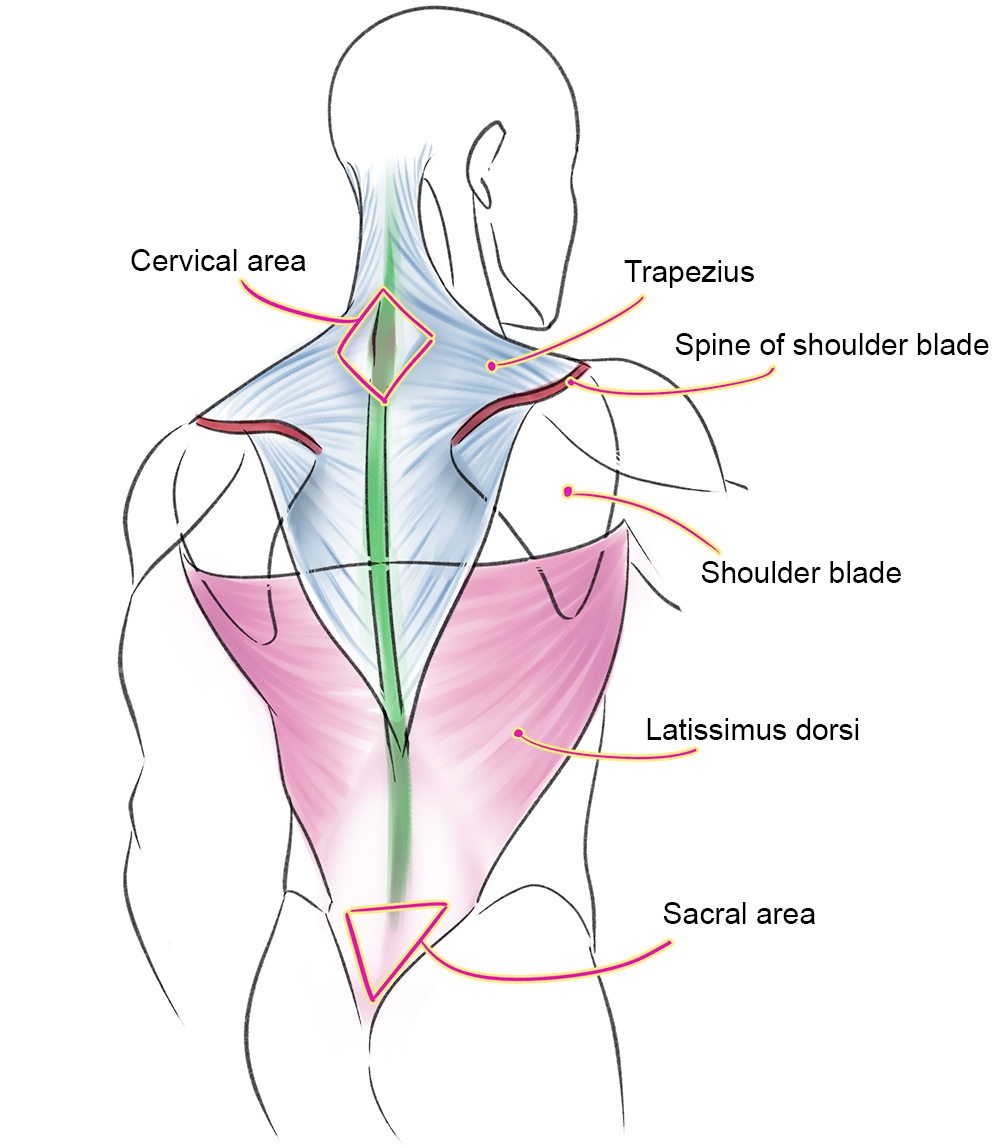
The trapezius enters the spine of the shoulder blade and the collarbones (or clavicles). When viewing from the front, this muscle draws the outline between the neck and the clavicles – to remember them, think of them as a couple of triangles!
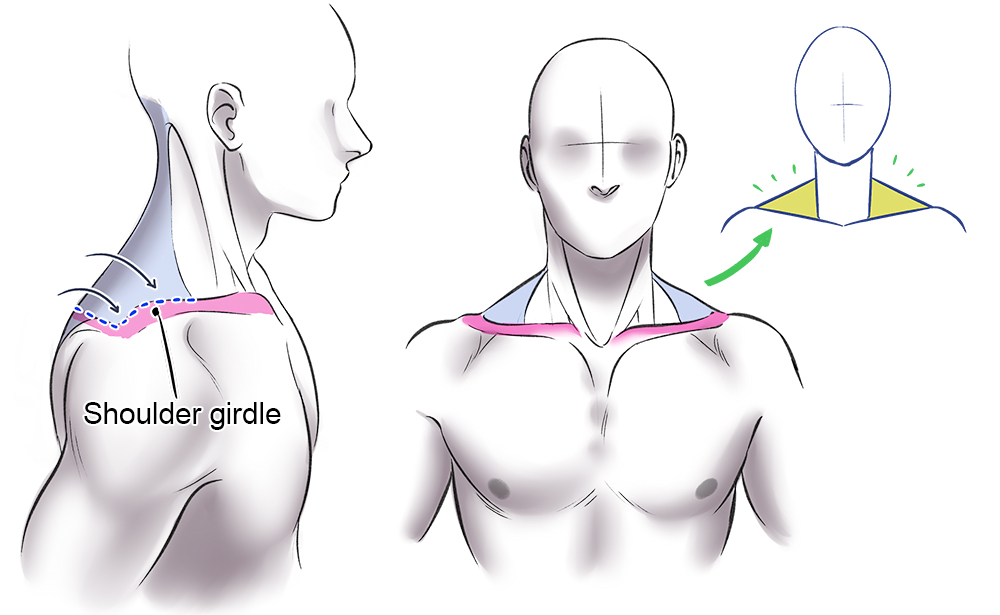
In the cervical area, you will usually see a small indentation. It becomes visible when you squeeze your shoulder blades together (A). When the muscle is relaxed, you may see some of the bones in the spine sticking out (B).
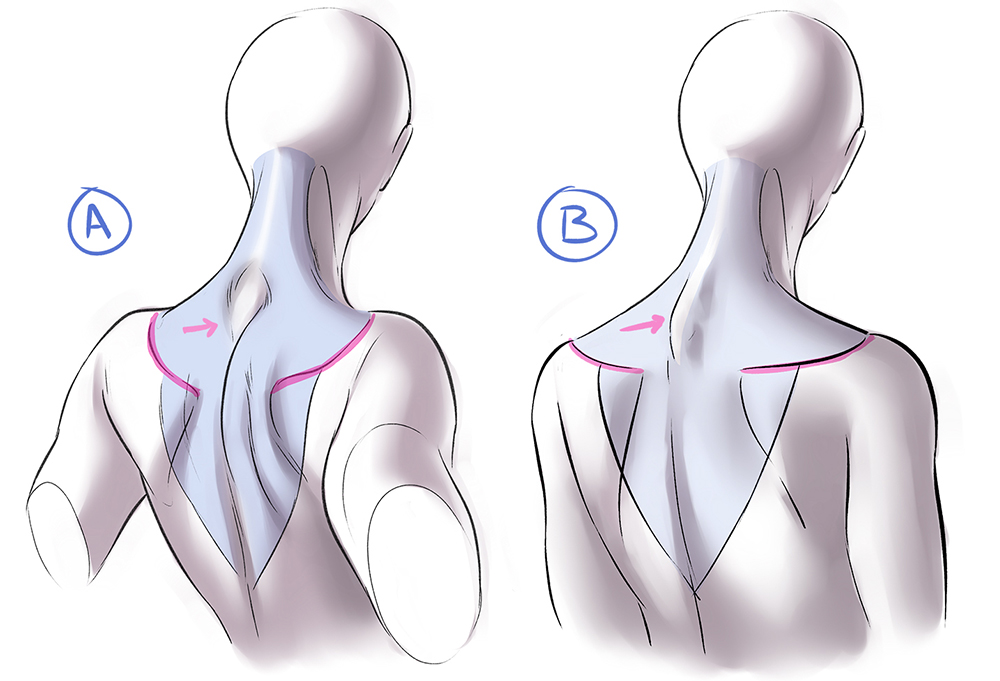
On the other hand, the dorsal muscle enters the humerus below the armpits, allowing the arms to extend and contract. It’s a flat muscle which isn’t easily visible from the front, except for a small part under the arms.
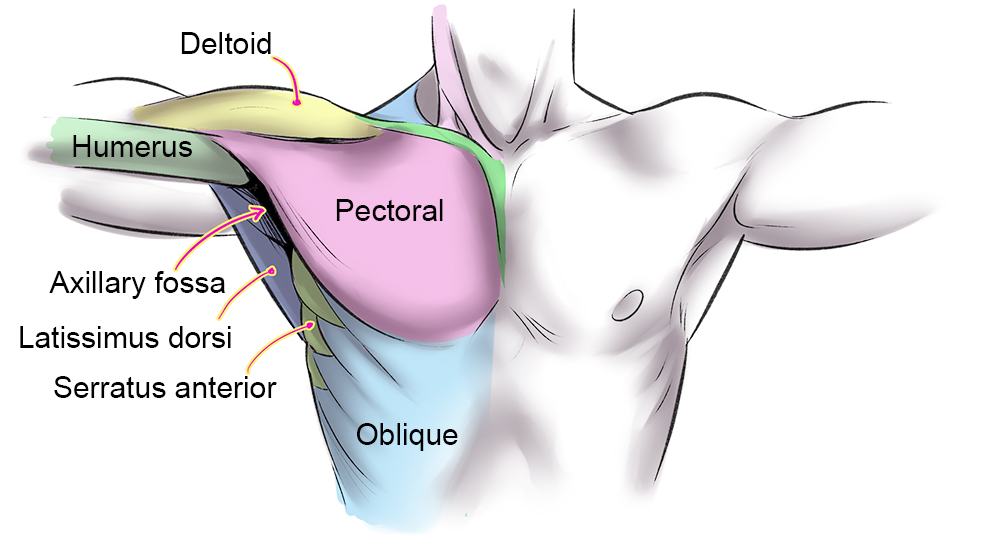
The serratus anterior is pulled from the nine upper ribs into the scapula, providing stability and mobility to the bone. This muscle is shaped like a fan, but we can only see a part since it is overlapped by the pectorals, the obliques and dorsals.
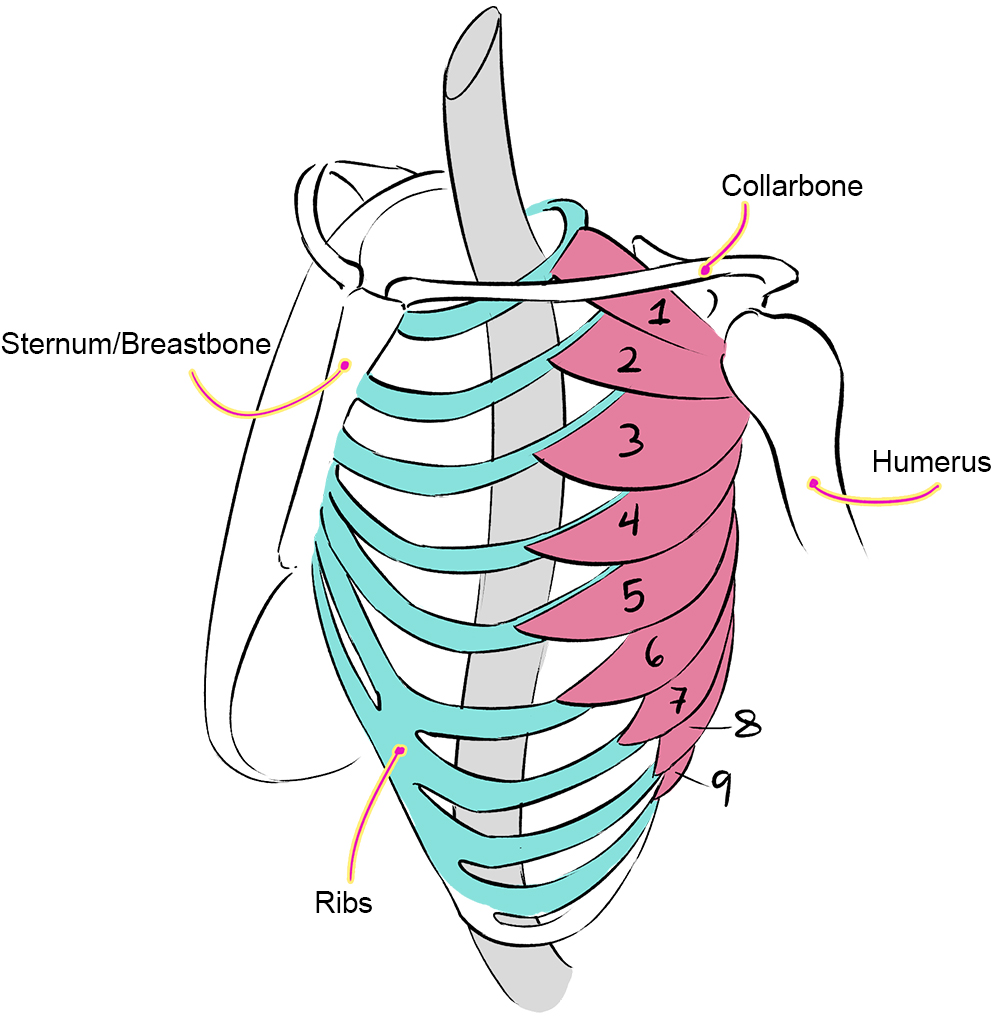
The pectorals are framed between the collarbones and the breastbone, the ends are attached to the humerus to allow the arms to rotate (one of its purposes).
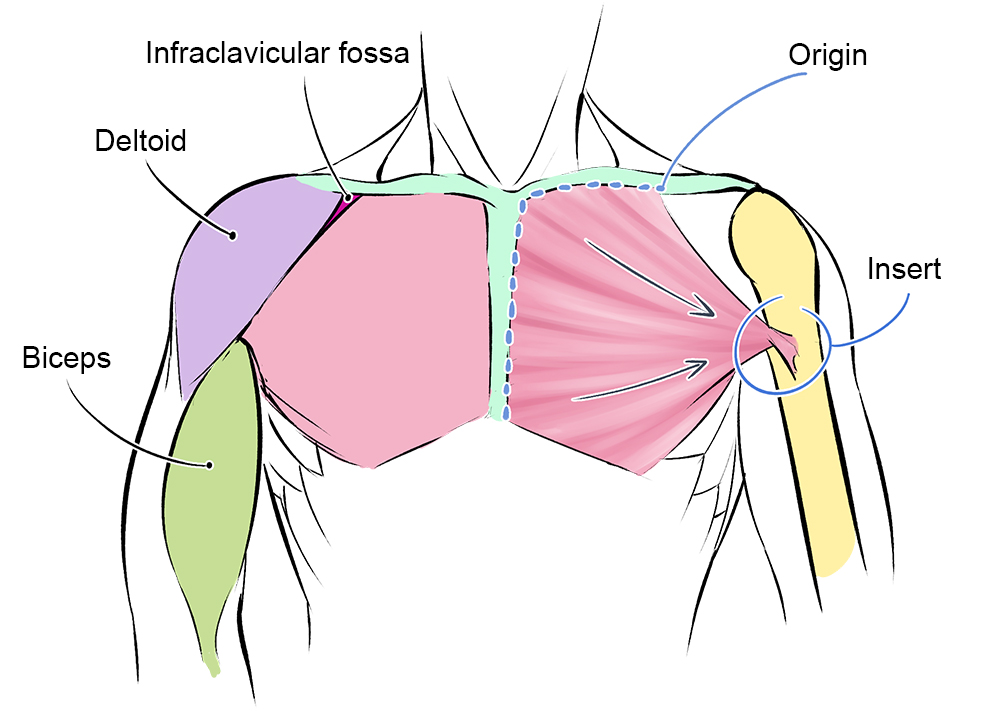
The infraclavicular fossa is the space between the pectorals and the deltoids. It is a very small detail, but nonetheless quite useful to identify the gap between the muscles.
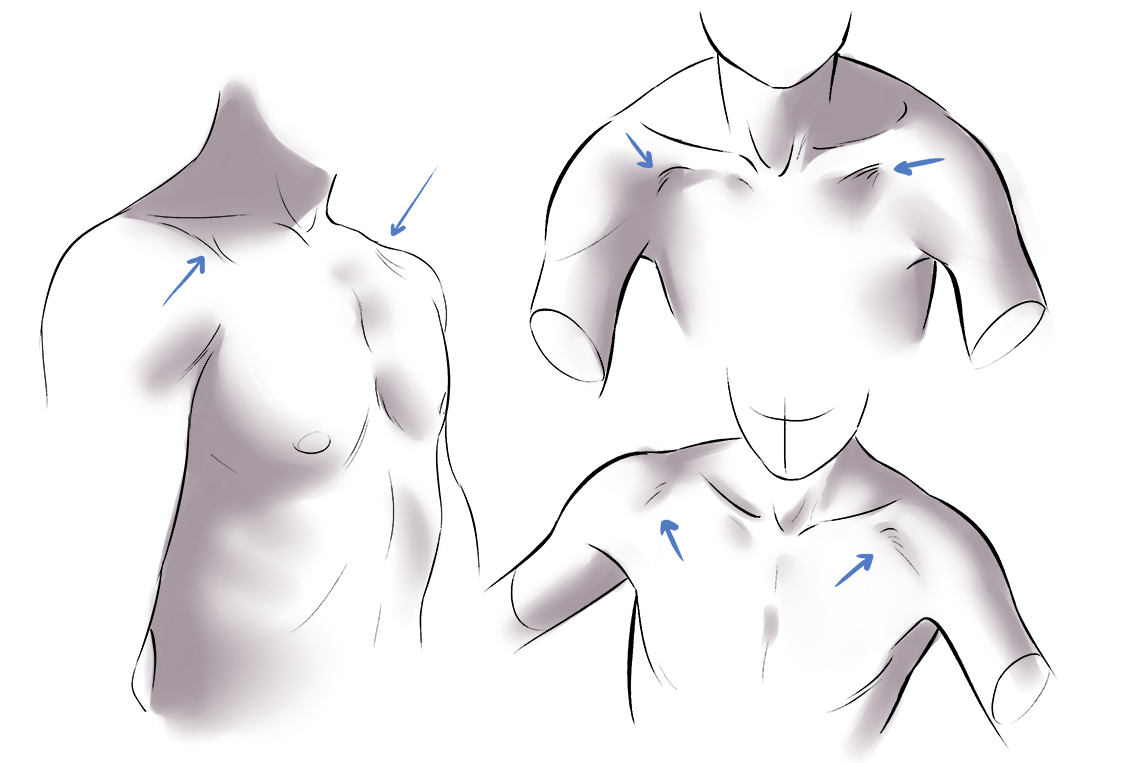
In the female body, the pectoral muscles are found behind the mammary glands. The breasts do not start immediately from the collarbones (a common mistake). The chest is flat at the top, but the breasts start from more or less the middle of the pectorals, as you can see in the following examples:
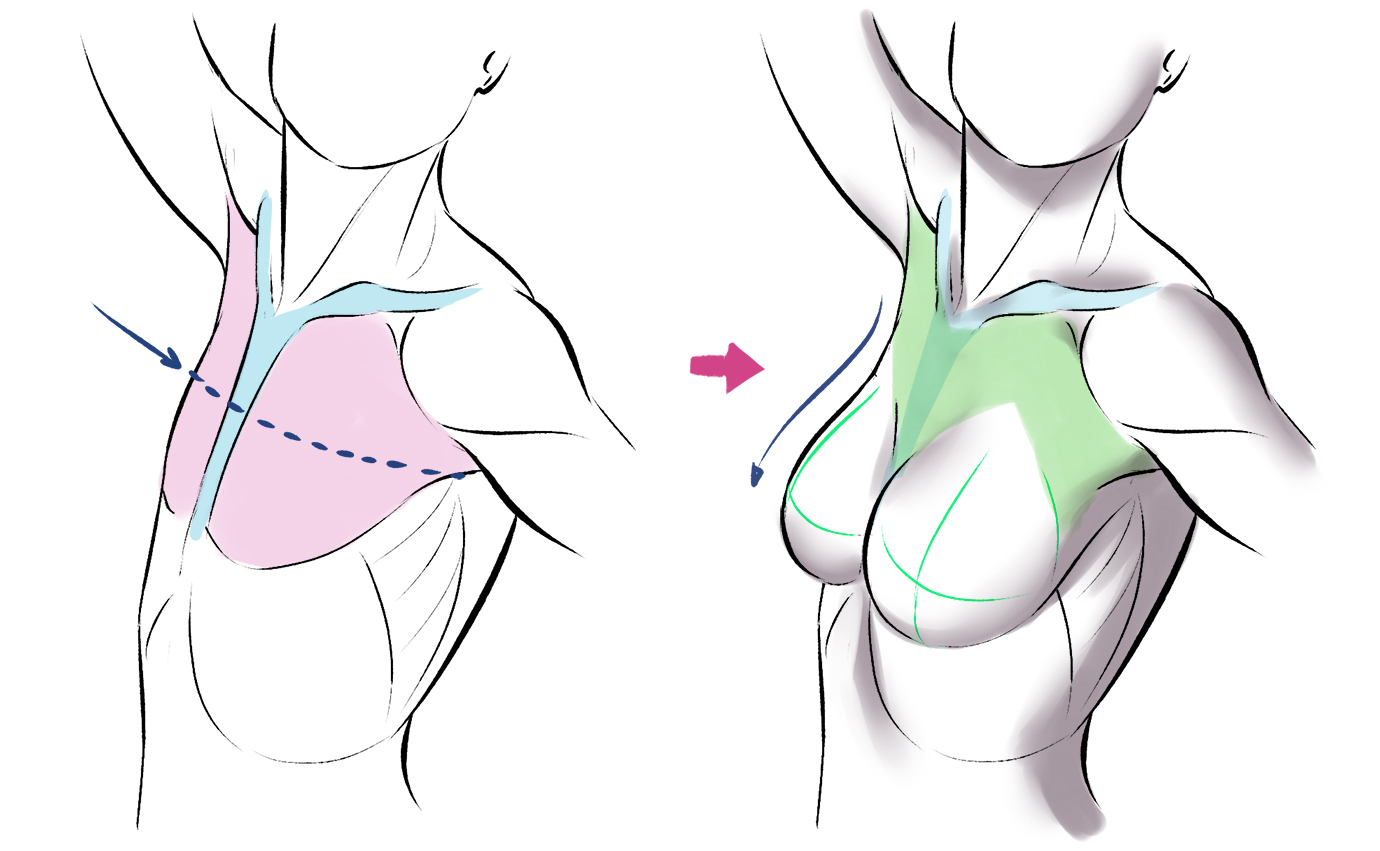
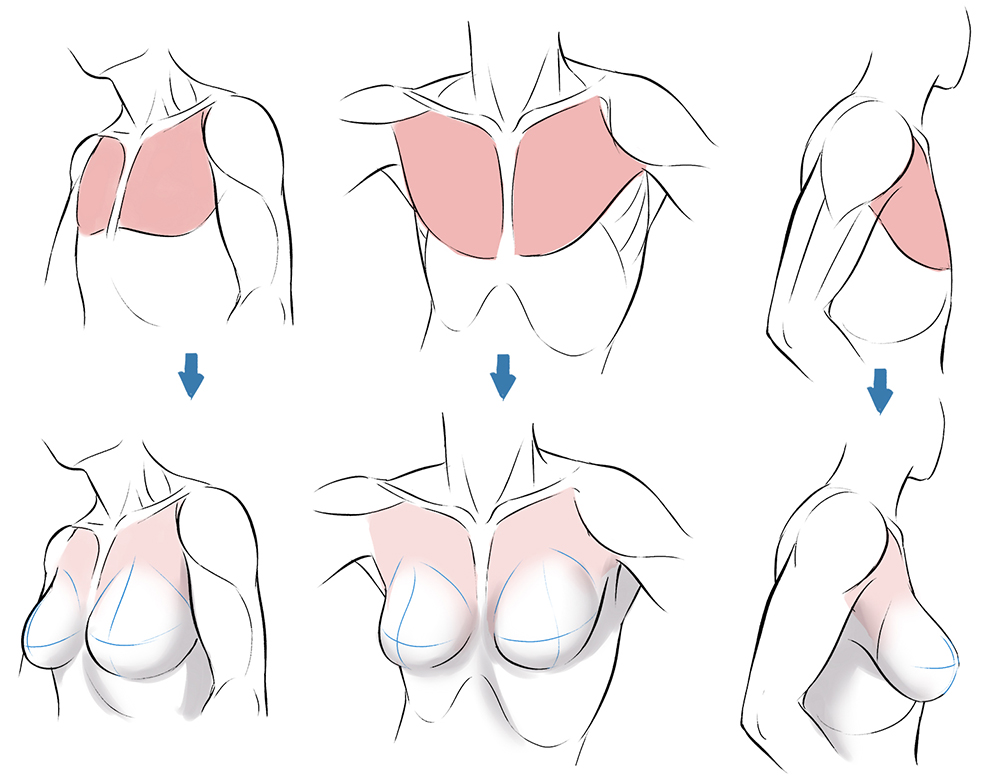
The muscles of the abdomen are in charge of bending, tilting and rotating the trunk.
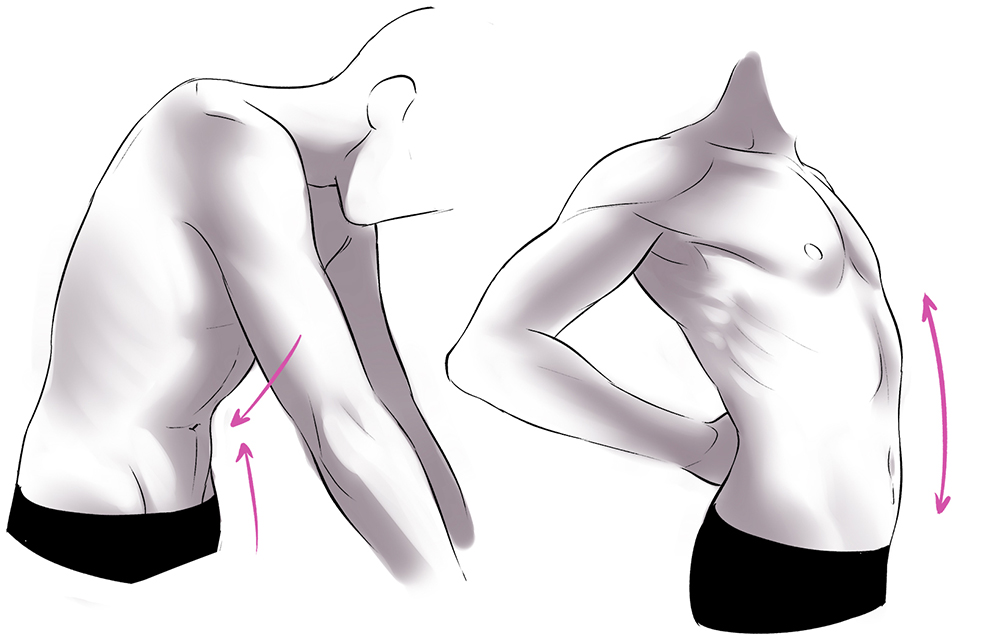
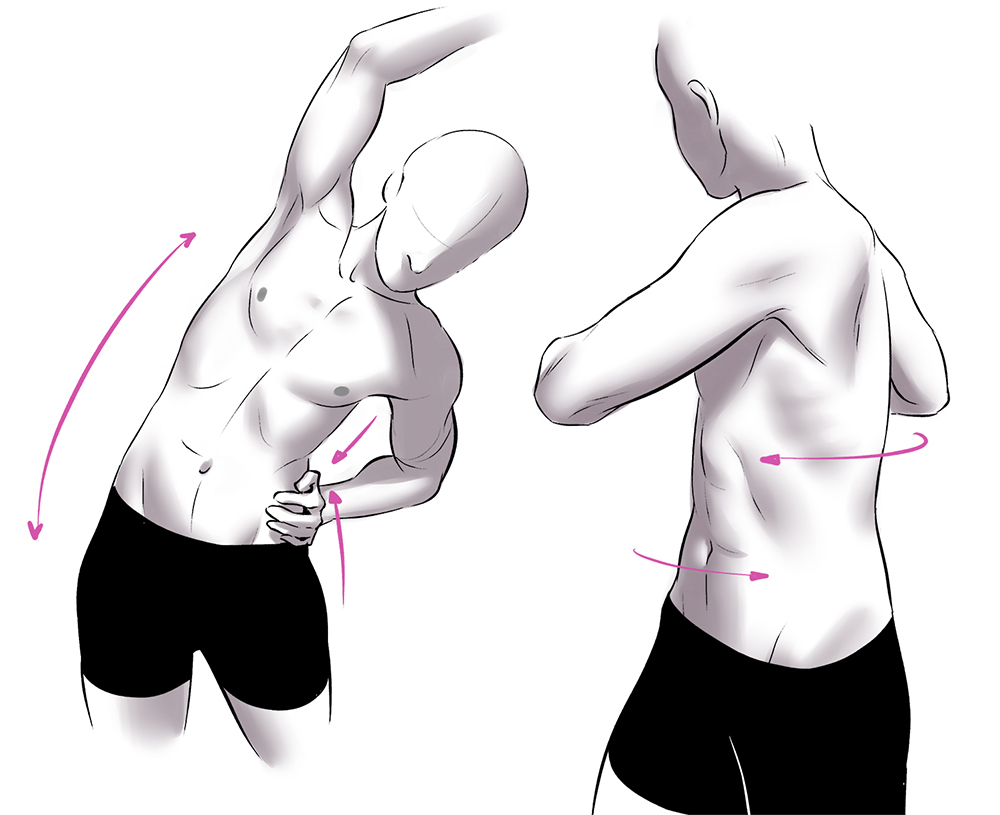
The linea alba (or white line) divides these muscles into two parts:
In the center, we can find the rectus abdominis muscle, below the arch of the ribs all the way to the pubis. It has 3 intersections that separate the muscle into 4 areas on each side.
The obliques are located to the sides and above the hip bones.
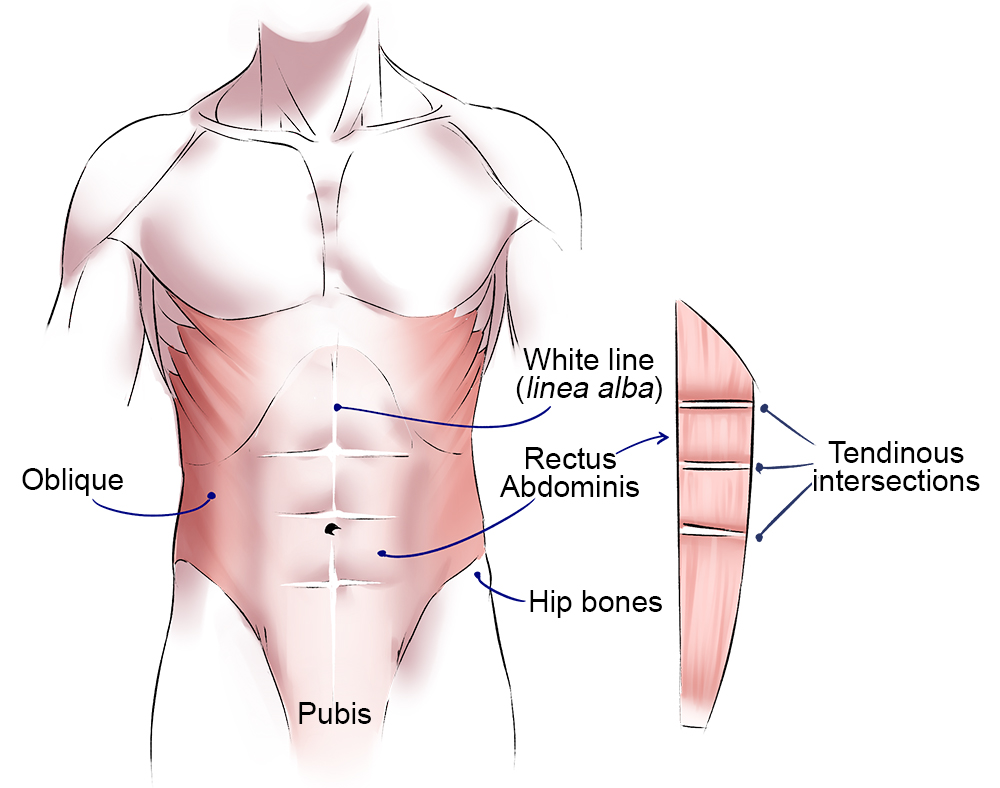
This side view shows how the muscles (dorsal, obliques and serratus anterior) intertwine to create a zig-zag line (A).
The Muscles of the Arms and Legs
The deltoids cover the shoulder joints. These are thick muscles and are shaped like upside-down triangles. The base is planted in the collarbone and inserts itself into the humerus.
Following the tip of the deltoid, we find the brachialis muscle. This muscle is pretty deep down – I like to think of it as a divider between the biceps (located in the front), and the triceps (in the back).
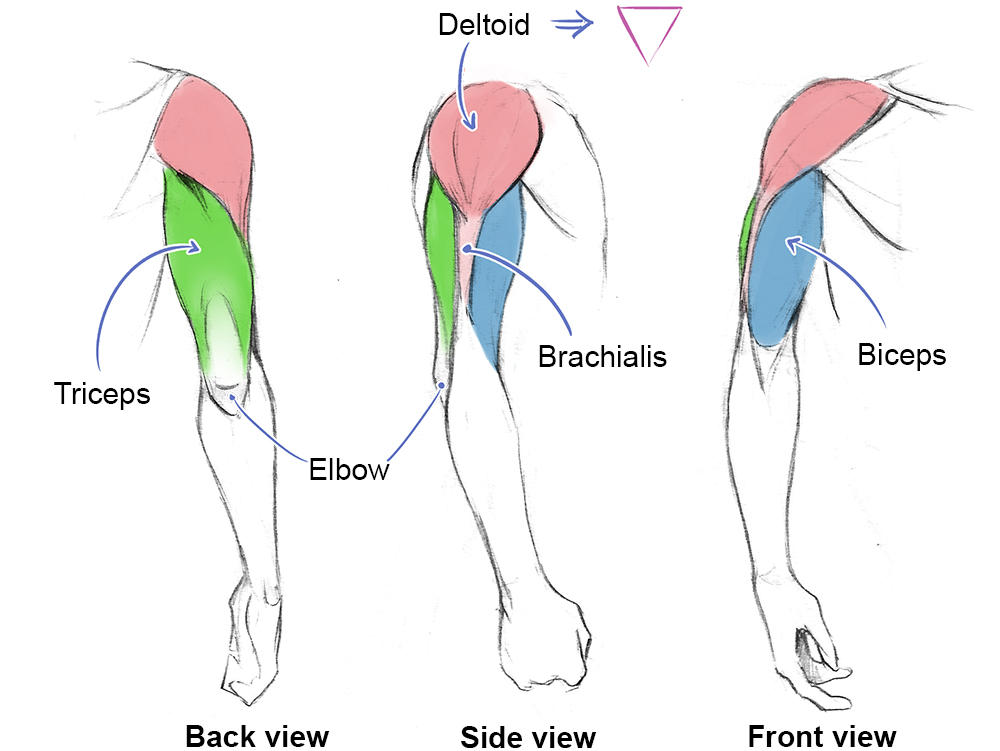
To simplify the biceps, draw a stretched oval. You can think of the thicker part of the triceps as a horseshoe shape… or a croissant, or a crescent! The flat part of the triceps (the tendon) is connected to the elbow.
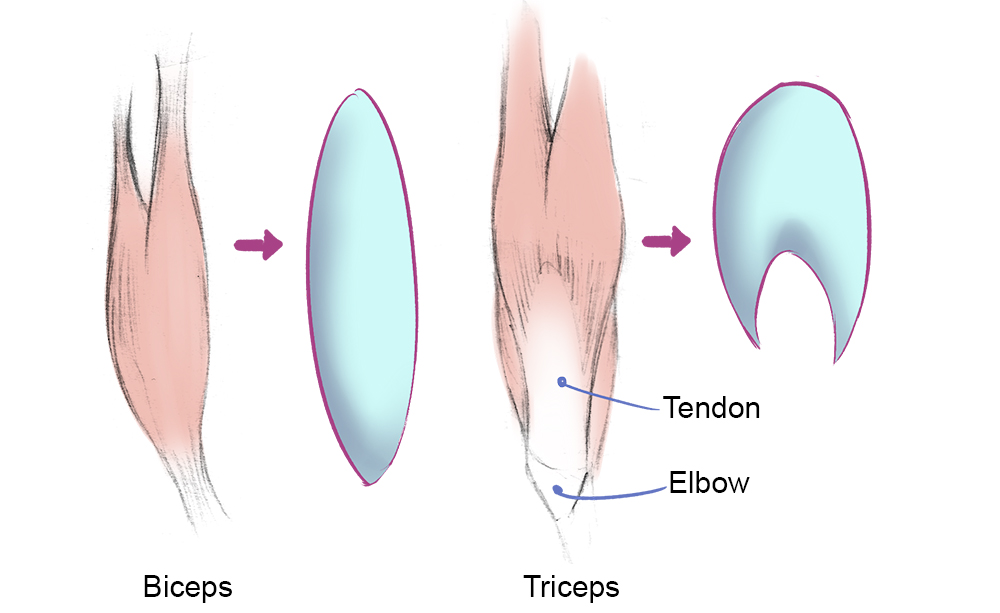
The muscles of the forearm provide mobility to the hand and fingers. They are very similar to each other: very elongated, thin, and flat shapes; so drawing them can be a bit confusing.
There are many, many ways to interpret muscles, and it is OK to use any method that is easy for you to understand. In the end, it all depends on observation and practice to be able to draw with precision. For example, we can delineate the silhouette of the forearm with a couple of ovals. Due to the asymmetry of the forearm, this oval on the same side as the thumb is slightly smaller, and it is located slightly above the other oval shape.
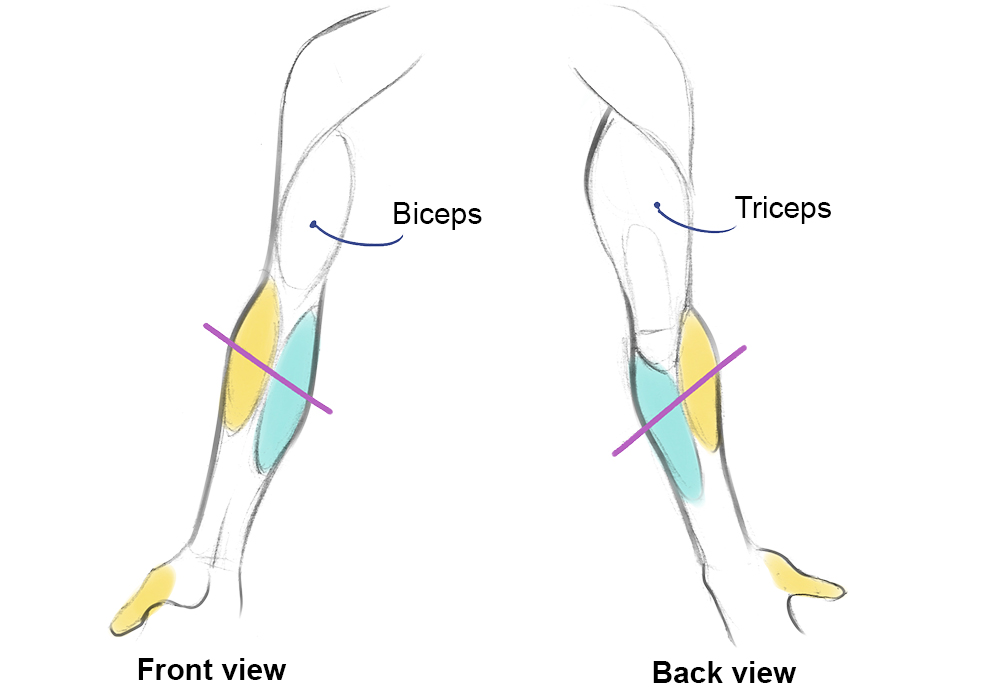
You will find a similar situation in the legs. Even though leg muscles are large and distinguishable, there is no need to draw each one of them in detail – many of them can be grouped together and drawn as a simple figure. Carefully observe the outlines and shapes that the muscles create in the body to simplify them properly.
The sartorius muscle divides the leg with a diagonal line. Starting at the sacrum all the way to the inner side of the shin (slightly below the knee), this is the longest muscle in the human body.
The inner thigh is made up of several adductors, but you can group them all together and treat them simply as a triangle.
The quadriceps consist of four individual muscles (one of them is not visible because it is located deep in the thigh) which all come together and join at the same tendon inside the knee. As a whole, they are shaped like a teardrop.
The shape of the calf is mostly defined by the two calf muscles, which are on the back of the leg and go into the heel. The front and sides of the leg are made up of other muscles and tendons that allow the toes to move.
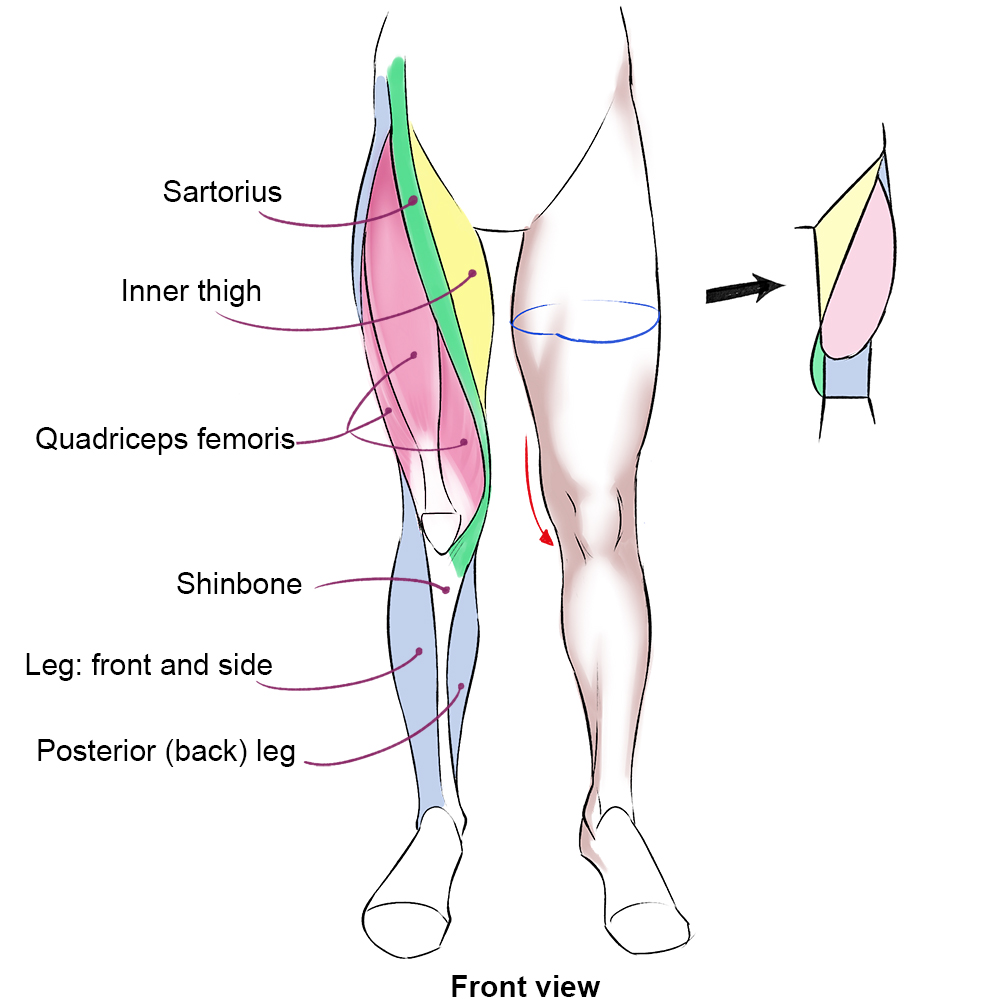
I have grouped together the biceps femoris, semitendinosus and semimembranosus as a single shape along the thigh. This shape is divided in two, leaving a diamond shaped pit in the back of the knee.
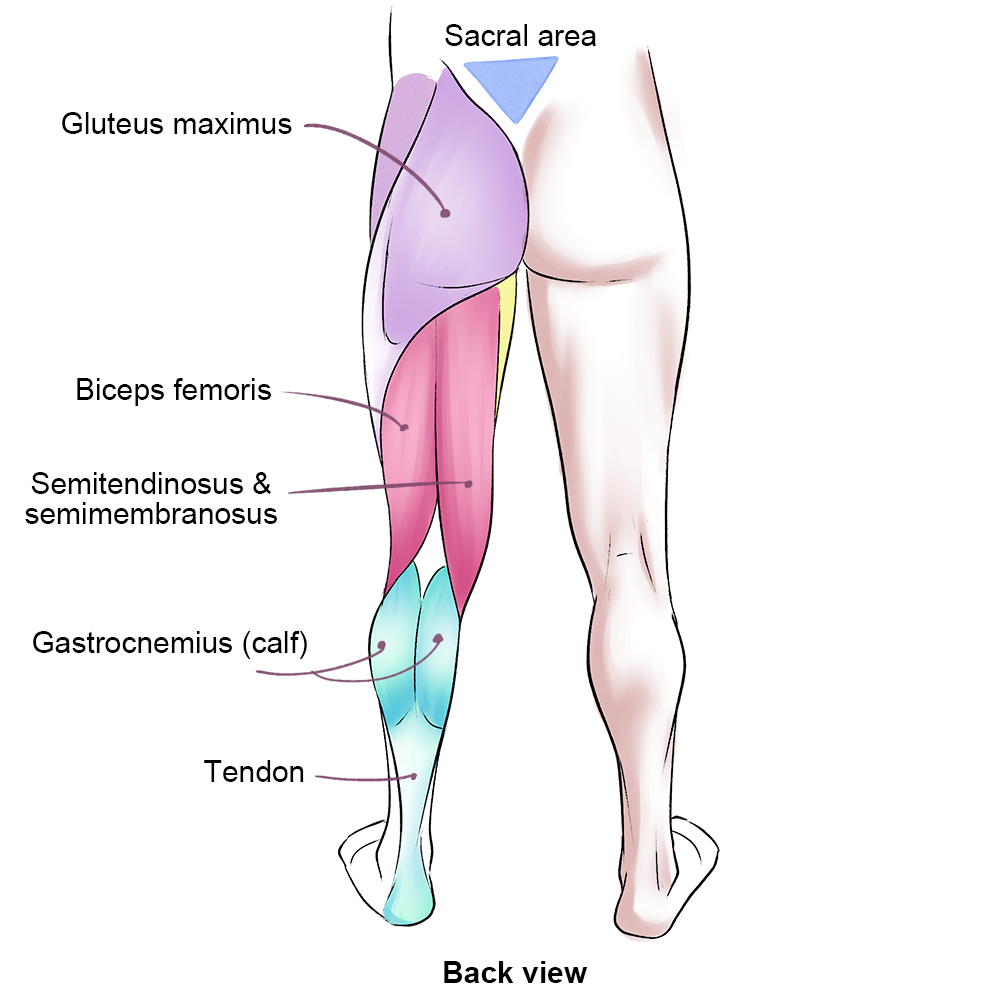
When drawing, shading will help you mark the muscles without the need to use lots and lots of lines to mark them out. Ideally, try to highlight the muscle that exerts the most strength in each pose, not all of them at once. Otherwise, the drawing will look exaggerated. Unless that’s what you’re going for!
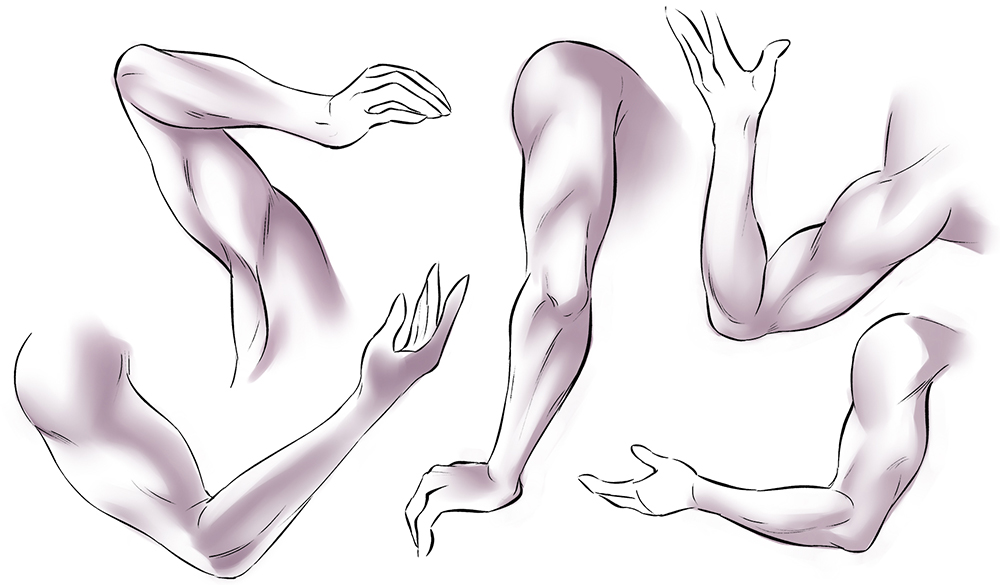
Take a good look at your references, try to imitate the poses you see to get a better understanding of them. Which body part is bending? Which part is stretching?
I hope this guide was helpful to you. If you like, you can visit me on social media and check out my portfolio to see more of my work:
https://www.instagram.com/eri_duh/
https://twitter.com/eri_duh
https://www.artstation.com/eridey
Thank you for reading!
– Eridey
Interested in character art & design or what it takes to become a character designer?
Check out the link below!





